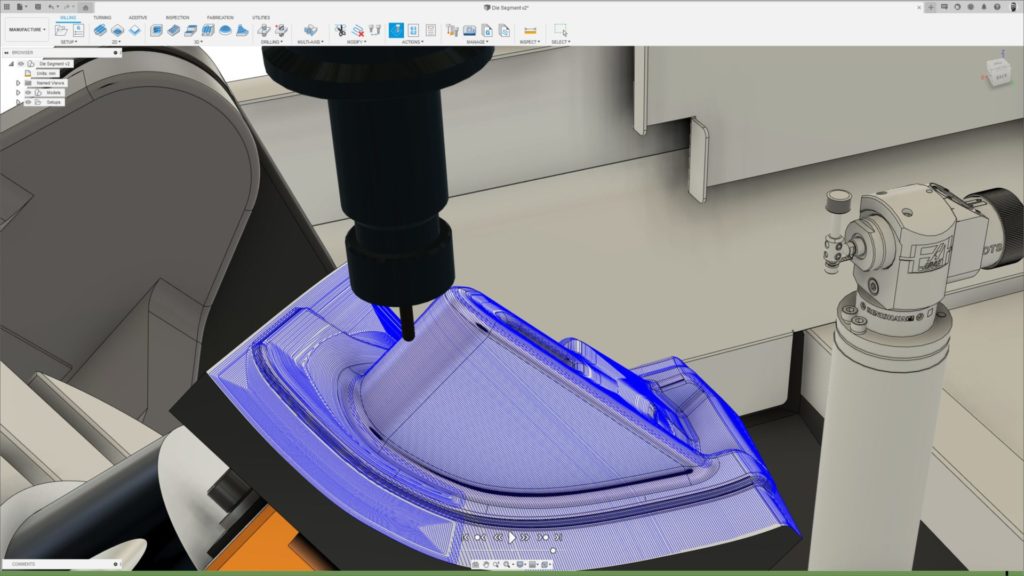& Construction

Integrated BIM tools, including Revit, AutoCAD, and Civil 3D
& Manufacturing

Professional CAD/CAM tools built on Inventor and AutoCAD
3 min read
This post is also available in: Français (French) Italiano (Italian) Deutsch (German)
Unlock the power of simultaneous multi-axis machining, including automatic collision avoidance, with the Fusion 360 Machining Extension to minimize your programming time and create reliable, repeatable toolpaths for your complex parts.

This article will show you how to use the multi-axis functionality available within the Fusion 360 Machining Extension, enabling you to create advanced 5-axis strategies with an easy-to-use user interface. We’ll also cover how to use Automatic Collision Avoidance for 4 and 5 axis machining to automatically tilt your tool to avoid collisions.
Let’s look at a few examples of how to use this functionality, starting with how to create a Steep and Shallow toolpath. Using the Multi-Axis tab in the toolpath dialog box, the first thing to do is select the Primary tool axis mode. You can then choose from several options:
You can also set a smoothing distance in the same section of the interface. This is the distance over which any sudden axis tilting can be smoothed to provide a better surface finish. The larger the distance, the more gradual the transition. Finally, you can also set a smoothing angle, which sets the maximum that the tool axis can deviate from the primary modes described above while applying smoothing. We recommend using the default value to start with for both the smoothing distance and angle. These smoothing parameters obviously can’t be set if your primary tool axis mode is set to Vertical, as the tool is only moving in 3 axes.
Let’s now create a toolpath using From Point. First, you’ll need to sketch a point and set smoothing parameters. You can also set tool axis limits. These will have to be consistent with the axis limits your machine can reach. For example, Use these options to control the maximum limits of tool axis tilt. These settings can be used to ensure that the tool axis stays within the limits of your machine tool. A maximum tilt angle is used here to control this limit, which applies to the lean and lead directions. You also have the option to
Now let’s walk through the Collision Avoidance functionality within the Multi-Axis tab of Steep and Shallow. This feature lets you pick how the tool should tilt when automatically avoiding collisions. There are a few options:
The last options are helpful for simpler geometry, while the Automatic option is the go-to choice for more complex parts.
The Fusion 360 Machining Extension also benefits from automatic collision avoidance in the rotary toolpath to avoid collisions while utilizing the 4th machining axis. This functionality will detect potential collisions between the tool shaft, holder, and component. It will then automatically select the most suitable direction to tilt the tool to avoid them.
A smoothing distance can be set to define the length of transition between tool axes. This can help avoid sudden axis tilting to provide a better surface finish. The larger the distance, the more gradual the transition.
Hopefully, this helps you start using the 5-axis functionality in the Fusion 360 Machining Extension. Ready to unlock even more Fusion 360 functionality? See how the Fusion 360 Machining Extension can enhance your process below:

By clicking subscribe, I agree to receive the Fusion newsletter and acknowledge the Autodesk Privacy Statement.
Success!
May we collect and use your data?
Learn more about the Third Party Services we use and our Privacy Statement.May we collect and use your data to tailor your experience?
Explore the benefits of a customized experience by managing your privacy settings for this site or visit our Privacy Statement to learn more about your options.